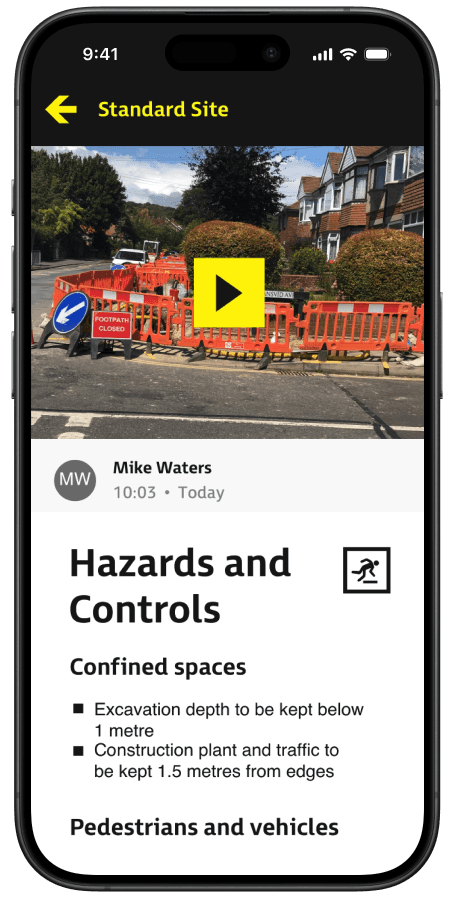AI for utility workers
Machine learning to improve safety and productivity in the utility industry

FYLD uses AI to improve productivity and safety of field operators. To date it has raised £26m and works with hundreds of companies around the world. In 2020, we built the platform using machine learning for effortless data capture and and simplified risk assessments, creating real time visibility of site activities and reducing risk to field operators.
As is normal, we ran fortnight long sprints throughout the development of FYLD. As we had a small team to start, my role was a mix between product design, strategy and research. Throughout the build I worked with senior business leaders to translate organisational strategy into product, business model and ultimately implementation.
Discovery and planning
We began each sprint with roadmap planning and feature prioritisation, using insights from the previous sprint for decision making.
Design & Prototyping
We'd then build prototypes of new features, and test them in-field with users. We bootstrapped prototyping by using WhatsApp groups, which gave us direct access to users and allowed us to learn enough before building the mobile app. Once we had a live app, we focused our prototyping on specific user cohorts, aiming to learn different things each week.
Development & Implementation
We took our insights from prototyping and translated them directly into UI, which we handed over to engineering for development.
Testing & Optimization
As new features rolled out, we'd monitor analytics for usage and bugs. At the early stage of the build we managed customer support as a team, each taking shifts. Later we hired a full-time customer support role.
Early prototyping with Whatsapp
Before we started to build the mobile app, we used whatsapp to hack together prototypes, giving us insight into user behaviour.
In-field research
As a team, we spent hours driving around the UK meeting utility teams and figuring out how to make their job easier. That's me chatting to a field operator.
Utilitarian visual design
FYLD’s visual design language is utilitarian. The product is used outside, during the day and night, often in emergency situations, so it’s important that users can get up to speed at a glance.
Speech-to-text risk assessments
Prior to FYLD, all risk assessment was paper based. When we first began discovery, we found that most field operators we averse to the idea of just using an app to fill in the same information. Instead, we used speech to text models to capture user input, allowing operators to video their site and record risk assessments.
Behaviour design
Throughout the initial build we ran experiments to understand how behavioural nudges would impact engagement. Our research showed that using social nudging dramatically improved risk assessment submissions, so we built a notification system focused on nudges like "3 teams in your area have submitted risk assessments today".
In May 2020, we hired the founding team to launch FYLD into the wild. Over the last 4 years FYLD has grown to 100s of organisations, raised £14.5m (Seed and Series A), won dozens of awards and is in the top 20 startups to watch in the UK. Although unquantifiable due to it’s preventative nature, FYLD continues to save hundreds of lives a year.




